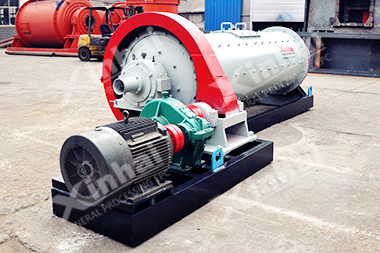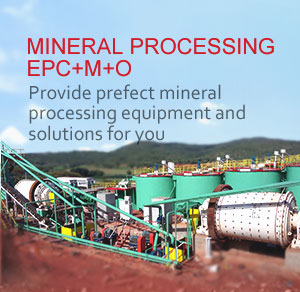- Home
- About
-
Mineral Processing EPC+M+O

Providing optimized solutions for your mine, one-stop service for mineral processing plant!
View details -
Product
- Grinding
- Classifying
Grinding & Classifying
- Flotation
- Gravity Separation Equipment
- Magnetic Equipment
- Gold Extraction Equipment
- Washing Equipment
Separating Process
- Thickening
- Dewatering Machine
Thickening & Dewatering
- Accessories
- Auxiliary Product
Consumables

Xinhai mineral processing equipment mainly include: grinding equipment, flotation equipment, dewatering equipment, magnetic separation equipment, and so on. Some of the equipment is Xinhai independent research and development, and has been awarded national patent. View details
-
Solutions
- Gold Tailings
- Tailings
Tailings

Gold CIP Production Line adsorbs gold from cyaniding pulp by active carbon including 7 steps: leaching pulp preparation, cyaniding leaching, carbon adsorption, gold loaded carbon desorption, pregnant solution electrodeposit, carbon acid regeneration, leaching pulp. View details
- Case
-
News
- Contact
Home Pruduct News These aspects influencing flotation cell effect should not be ignored!
These aspects influencing flotation cell effect should not be ignored!
2020-07-14 XinHai Views (3012)Flotation cell is the core equipment of the whole flotation workshop. After adding agent, the ore particles adhere to the bubbles through the agitation and inflation. The bubbles float to the pulp surface, and scraped by the scraper blade into foams. In flotation process, the factors influencing flotation effect include grinding fineness, slurry and feeding concentration, air inflation, flotation time. In this passage, we will analyze the above factors, and find out how they influence flotation effects of flotation cell.
One. The influence of grinding fineness
The grinding fineness is an adjustable factor, which is realized through crushing and grinding operation. The suitable grinding particle size is determined by the inlay size of the valuable mineral through mineral processing experiment. The valuable minerals should be separated with the gangue minerals basically, and reducing the ore spawn of valuable minerals and gangue minerals. For coarse single minerals, the grinding fineness should be less than the mineral flotation particle size upper limit, such as the upper flotation limit of sulfide ore is 0.25-0.3 mm, 0.2 mm for gold bearing pyrite. The gold particle can’t be floated if the particle size of single gold is over 0.5 mm, which should be controlled under 0.2 mm.

It should be paid attention that, meticulous grinding fineness is also harmful for flotation process (it causes too much mud). Generally speaking, if the grinding fineness is less than 0.01mm, the flotation indexes are reduced observably. If it is less than 2~5 μm, the valuable minerals can’t be separated from gangue minerals. Therefore, the suitable grinding fineness has decisive meaning to the flotation effect.
Two. The influence of concentration
The influences of slurry concentration are shown in these aspects:
1.Recovery rate
The slurry concentration and recovery rate have obvious regularity in all kinds of mineral flotation. If the slurry is thin, the recovery is low; if the slurry concentration increases, so is the recovery rate. If the slurry concentration is over the suitable limit, the recovery rate also reduces.
2.The quality of concentrations
Generally, the quality of concentrations is good if the slurry concentration is thin. On the contrary, the quality of concentrations is weak if the slurry concentration is thick.
3.The dosage of reagents
The slurry should maintain a certain concentration of reagents. If the pulp slurry concentration is thick, the reagent concentration should be increased, the reagent amount for single ton ores is reduced. On the contrary, if the pulp concentration is thin, the reagent amount for single tone ores is increased.
4.The production capacity
With the increase of pulp concentration, the production capacity of flotation cell is also increased, and the water and electricity consumption is reduced.
5.Flotation period
The pulp concentration is increased, so is the flotation period, which is advantage for increasing the recovery rate.

In actual production, the ideal pulp concentration is determined through mineral processing experiment, considering the ore characteristic and the specific flotation conditions.
It is worth noting that, the feeding concentration has a large influence in the operation. The influences are shown in these two aspects.
1.The influence of feeding concentration on concentration quality
The quality of flotation concentrations is change with the feeding concentration. In the regulated feeding concentration limit, the feeding concentration can be increased, which can save the flotation reagents and increase the production rate of concentrations. However, if the feeding concentration is too high, the quality of concentration reduces. In the limited feeding concentration, if it is reduced, the selectivity of fine minerals is improved. However, if the feeding concentration is over low, the foam layer is too thin which needs to increase the agent amount. It reduces the concentration of flotation concentrations, which is hard for dehydration. Therefore, it is necessary to maintain a suitable feeding concentration.
2.The influence of feeding concentration on the foam layer
The feeding concentration can reflect from the foam layer. Under a suitable feeding concentration, the foam layer thickness is thinner from the first tank to the end tank. The first and second tanks have thick foam layers, which is dense and stable with average bubbles and good liquidity. In the third tank, the broad bean sized alight bubbles can be seen. It is grainy when twisting by hands. It is because the coarse particles are floated. Crisp sound can be heard when the foams are scraped into the foam collection tank. The bubbles are larger as goose eggs with weak liquidity in the fourth tank. The flotation concentrations are most in the first three tanks of flotation cells, especially the first two tanks. The foam layer in the last tank is the thinnest with larger bubbles. Therefore the scraped bubbles are few and the particle size of concentrations is large.

If the feeding concentration is too thick, the bubble is sticky and stiff. If there are foams in the tailing water, it means the mine running in the tailings. The reagent dosage should be increased in this time.
If the feeding concentration is too thin or the feeding granular composition is too fine, there are average and cobblestone sticky bubbles in the first two tanks of flotation cell. The foam layers is no roughness with poor liquidity. There is no crisp sound when scrapping into the concentration tank. If there is a flip phenomenon in the last two tanks of the flotation cell and the foam layer can hardly cover the surface, the reagent dosage should be reduced.
Three. The influence of air inflation.
The bubbles are the media and carrier of flotation cell. Hydrophobic mineral particles are attached on the bubbles and float as mineral bubbles. The hydrophilic minerals disperse in the water. Therefore, the air inflation amount is the key point influencing the flotation indexes and effect in flotation cell.

Under normal conditions, with the increase of air inflation amount, the more bubbles are, the faster flotation speed is. The capacity of flotation cell is improved too. If the air inflation is over large, the flotation surface is easy to turn, which causes it unable to form a stable foam layer and influences the mineral particles floating. If the air inflation is too small, the fewer bubbles are, the slow the flotation speed is, the lower flotation capacity is. It causes the mineral particles can not float and lost in the tailings. Therefore, in the flotation process, only suitable air inflation can acquire the ideal flotation effect.
Four. The influence of reagent system
The flotation reagent system mainly includes the adding method and reagent amount. The suitable reagent system is the guarantee of the quality of flotation concentration product. It is the key increasing flotation concentration recovery rate.

1.The influence of adding method
The adding method includes single point adding and multiple points adding. In the actual production, the adding method is different according to the floatability, particle size composition, flotation speed and other characteristics.
(1)Single point adding
Single point adding is adding all the reagents in the pre-preparation equipment. In the initial stages, the reagent concentration is higher in the pulp. The fine particles absorb more reagent because of the larger superficial area. The coarse particles absorb less reagent because of the smaller superficial area. A large amount of fine and superfine particles are floated first in a fast speed. The foam amount is large with more fine mud. The flotation selectivity is poor. And the secondary enrichment is weakened and so is the concentration effect. In the anaphase, the reagent amount is lower. The coarse minerals cannot absorb enough reagent and loss in the tailings, leading to the reduction of concentrations production rate.
Under normal conditions, the single adding method can be applied for easy floating minerals and average composite minerals to improve the flotation speed and increase the capacity of flotation cell.

(2)Multiple point adding
It is also called defect dosing. The flotation reagent are adding into the certain pre-preparation equipment and flotation tank in proportion.
2.The influence of reagent amount
If the reagent amount is over large or small, the flotation condition is different. When the foaming agent is too little, the foam layer in all the tanks is thin and with many virtual bubbles. The liquid is easy to turn, and the foam layer cannot cover the liquid surface. If the liquid surface is lower, foams are hard to be scraped or fewer foams can be scraped.

If the foaming reagent is over. There are a large number of alveolate foams in tanks, and most are with few mineral particles. The foams are sticky. The foams are not easy to be eliminated and even emerge from the concentration tank. This phenomenon is obvious if there is much mud content in feed or more carbon atom in foaming agent. Therefore, the flotation cell operator should know well about the mineral reagent dosage standard and judge whether the reagent amount is suitable according to the state of foam layer and tailings.
Five. The influence of flotation time
The residence time of pulp in all the flotation tanks is called the operation flotation time. The total time of rough flotation and scavenging flotation time is the total flotation time.

The suitable flotation time is determined by mineral processing experiment. The flotation time is short if the mineral is with good floatability, less floatable mineral content, suitable feeding particle size, small pulp concentration, and strong reagent air inflation. Otherwise, the flotation time is longer.
It can increase the recovery rate to increase the flotation time, but the concentration grade reduces. In the beginning, the recovery rate increases obviously. Then, as the flotation time lengthens, the increasing rate reduces to a fixed value.
In the flotation plant design period, the flotation time determines the number of units of the appointed model of flotation cell. In a range, the flotation time can be increased by increasing the times of rouging and scavenging or flotation tanks. It is advantage for increasing the recovery rate.
The above are the main factors influencing the flotation effect. In the daily operation, to guarantee the flotation continuous and stable operation, the operator should know more about the structure and working principle of flotation cell, and also should know the flotability and particle size composite of flotation mineral, and the influencing factors of flotation effect, avoiding blindly working.
Five Ways to Prevent the Abnormal High Temperature of Ball Mill Grinder
None... [more]
【Xinhai Mine Design Institute】Planning Reasonable Mines, And Focus on the Full Effect
None ... [more]
Related Article
- Global Mining Industry Analysis: Trends, Challenges, and Opportunities in 2025
- Phosphate Ore Processing and Beneficiation Plant Design: A Comprehensive Engineering Approach
- Titanium Ore Beneficiation: Navigating Global Supply Shifts with Advanced Processing Solutions
- Lithium Ore Processing Methods: Efficient Extraction Techniques for Battery-Grade Lithium
- Improving Graphite Ore Processing for Efficiency and Purification
- Chrome/Chromite mining company in South Africa
- Efficient Chrome Ore Gravity Processing Plants: Cost-Effective Solutions for Mineral Recovery
- What machines are used in lithium processing?
- Manganese Ore Processing Methods and Equipment
- Cutting-Edge Lithium Processing: Advanced Techniques for Beneficiation and Refining
Mineral Processing EPC
Solutions
CONTACT US
- Tel: 0086 15901320633
- Fax: 0086 10 59621207
- Email: mhxu@xinhaimining.net
© 2017 Shandong Xinhai Mining Technology & Equipment Inc. Technical Support: Beijing Xinhulian Technology Co., Ltd.
Factory Address: No. 188, Xinhai Street, Fushan high-tech industrial development district, Yantai, Shandong, China






